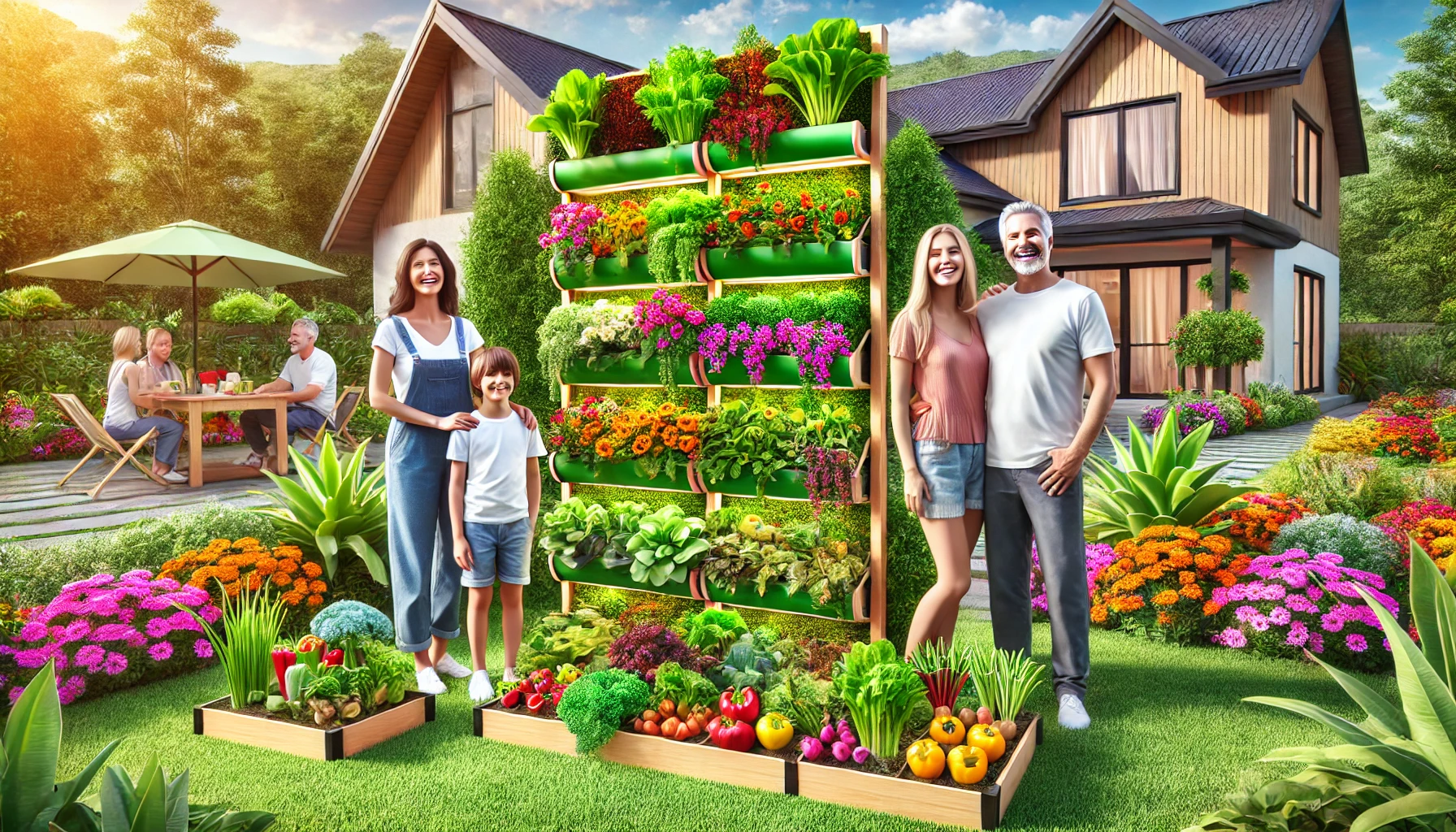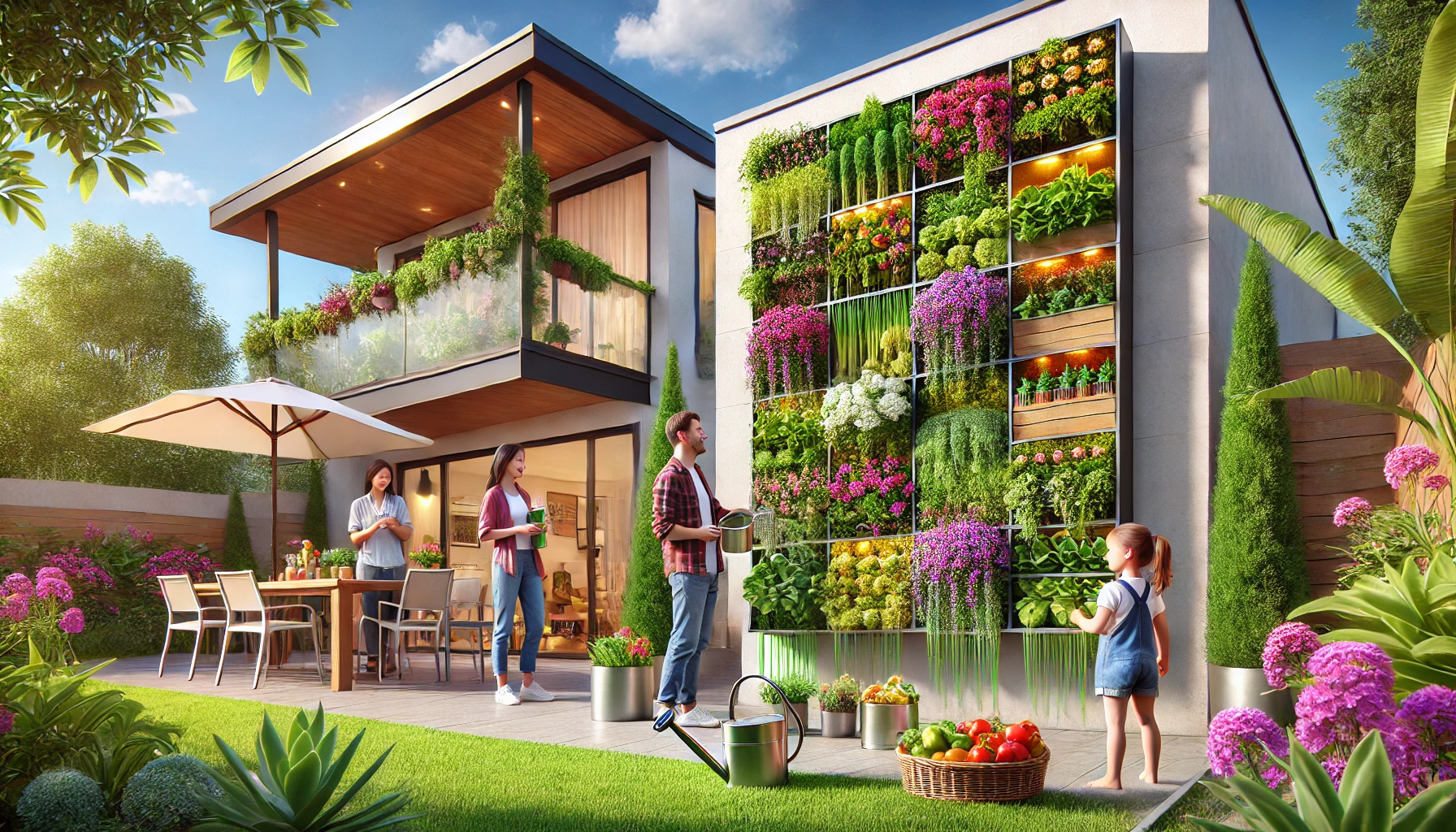So this whole concept of an outdoor vertical garden system is pretty rad. Imagine transforming a boring wall or a small tight space into something blooming and green all year round. Sounds cool, right? That’s precisely what you get with a vertical garden. Think of it as a big, green tapestry that not only looks great but also helps the environment.
Vertical gardens have been around for a bit, but they’re really making waves now thanks to the need for more eco-friendly living solutions. Just like regular gardens, they offer fresh air and a place to grow your favorite plants. But the big win with outdoor vertical gardens? You can start one even if your ‘backyard’ is more like a patch of pavement or a tiny balcony.
And if you’re into looking at the history of stuff, you’ll see this idea isn’t brand new. People have been growing stuff vertically long before it got trendy. Ancient civilizations used vertical gardening techniques and now, we’ve just given them a modern spin. It’s a blend of past meeting future. Perfect, right?
An outdoor vertical garden system could be what you’re looking for if you’d love to garden but can’t figure out where to put it all. There’s no wasted space, less mess on the ground, and it’s like hanging living art on your wall. Plus, you’ll be doing good for the planet by growing your own plants. It’s like a two-for-one deal you can’t refuse!
Advantages of Implementing Vertical Garden Systems
Space in urban areas is seriously tough to find, but vertical garden systems make it possible to have lush greenery where you never thought possible. Just picture a bunch of plants climbing up your wall instead of taking over your limited floor space—it’s like giving your home a plant makeover without losing any room.
Beyond saving space, these gardens are a feast for the eyes. They’re a dream for anyone who’s all about aesthetics and design. You can mix up all kinds of plant varieties, creating stunning living wall art or super cool green partitions. It’s a chance to get artsy with your plant picks and designs.
Plus, vertical gardens do wonders for the environment around them. They help boost biodiversity by attracting various birds and insects, especially the helpful pollinators. It’s a small but effective way to bring a patch of nature to your doorstep, creating a habitat for wildlife even in the most urban setting.
Whether you’re a beginner in gardening or a seasoned plant lover, these systems offer flexibility like no other. You can easily adapt and change plants without too much hassle, keeping your garden fresh and dynamic throughout the year.
If you’re worried about the planet, you’ll dig this: vertical gardens help clean the air. They filter out pollutants and release oxygen, offering a refreshing breath right outside your window. Not only do they bring life to your space, but they give the environment a much-needed break.
Exploring Potential Drawbacks
While the idea of vertical gardening is super appealing, it’s not a complete walk in the park. One of the first things to think about is the initial setup cost. Depending on the design and the type of system, it can be a bit of an investment upfront. From the framework and the plants to the irrigation system, these components can add up pretty quickly.
Another thing that might trip up beginners is the complexity. It’s not exactly like throwing seeds in a pot and watching them grow. You’ve got to consider the structure, how it’s going to attach to your wall, and making sure the framework is sturdy enough to hold everything. Maintenance is another factor. Vertical gardens need attention, especially when it comes to pruning and checking for pests. They way have specific needs compared to traditional gardening practices, especially when it comes to ensuring that nutrition and water reach every plant evenly.
There can also be a bit of a headache if your building has regulations or rules about adding structures to walls. Before you start, it’s wise to check with any homeowners’ associations or local zoning laws to avoid any fine-print issues.
And let’s talk about environmental impact. While vertical gardens themselves are eco-friendly, not all materials used to build them are. It’s worth seeking sustainable options wherever possible to keep everything green, literally and figuratively.
So while there are a few hurdles to jump over, knowing these drawbacks can help you plan better and navigate any challenges. With some preparation, those green walls can become a long-lasting feature of your outdoor vibe.
Choosing the Right Irrigation System
Watering a vertical garden isn’t as simple as grabbing a hose. Picking the right irrigation setup really matters. Different systems offer different advantages, like drip irrigation or an automated setup, so it’s worth seeing which fits your lifestyle.
Drip irrigation usually tops the list for vertical gardens. It’s efficient, delivering water straight to the roots without much waste. Perfect if you’re into sustainability and not splashing out too much on water bills.
Automated systems are fantastic if you’re not always around to babysit your garden. Timers and sensors can adjust the watering schedule based on weather conditions, meaning your plants won’t go thirsty just because you forgot.
Some folks use capillary mats or wicking systems. They’re less techy but still pretty effective. These options are more hands-on; you’ll need to keep an eye out to ensure everything stays hydrated.
No matter which system you choose, making sure it’s installed properly is crucial. Water needs to reach all the plants evenly, avoiding any thirst-stricken corners. Good maintenance of your irrigation setup is just as important as the garden itself, ensuring everything runs smoothly.
Cost Analysis: Building Your Vertical Haven
Setting up a vertical garden might seem pricey upfront, but it doesn’t have to break the bank. Costs can vary significantly depending on the type of materials and whether you choose to DIY or bring in the pros.
Materials like metal, wood, and sturdy plastic are pretty common, but each comes with its own price range. If you’re on a tight budget, repurposing materials or hitting up local recycling centers can keep costs down without compromising style.
Then there’s the question of doing it yourself versus hiring help. Going the DIY route can definitely save you some cash, but it does require a bit of planning and elbow grease. For those not confident with tools, hiring a professional might be worth the extra dollars to ensure everything’s solid and safe.
On average, a decent-sized vertical garden can range from a couple of hundred to several thousand bucks, depending on your tastes and tech additions like automated watering systems.
But think about the bigger picture: besides the obvious aesthetic boost, vertical gardens can increase property value and energy savings through added insulation. Essentially, they pay you back over time, making your initial investment feel like a savvy move.
Selecting the Ideal Plant Varieties
Picking the right plants can make or break your vertical garden. You’ll want to choose varieties that fit your climate and your level of gardening expertise. No need to overthink it, just keeping in mind what vibes with your local weather makes a huge difference.
For those just starting out, low-maintenance plants like succulents, ferns, or ivies can be great choices. They require less fuss but still offer plenty of visual appeal. If you’re going for an edible garden, herbs like mint, basil, and parsley can thrive in a vertical setup and look and smell fantastic.
Living in a more temperate climate? Add some flowering plants like petunias or begonias for a pop of color that changes with the seasons. Conversely, if you’re in a dryer region, stick with drought-resistant plants. They’ll save you from endless watering woes and still thrive beautifully on your garden wall.

For those who love variety, mixing and matching plants can create a vibrant tapestry. Consider interspersing trailing plants with those that have a more bushy growth habit. It helps fill in spaces and makes your garden look lush and complete.
Experimenting with different combinations not only enhances aesthetic appeal but also boosts your plant’s health. Different heights and textures can create micro-environments that help each plant thrive. This can lead to a healthier, more robust garden that flourishes under different conditions.
Conclusion: Embarking on Your Vertical Garden Journey
Creating a vertical garden might feel like a lot initially, but it’s so worth it. From bringing in that extra touch of nature to making the most out of the tiniest spaces, these systems are changing the game for urban gardening.
Think about how much greener your life could be with a little creativity and the right setup. And there’s a certain joy in choosing plants that suit your space and style, then watching them thrive on your wall.
Remember, it doesn’t have to be perfect from the start. It’s totally fine to tweak things along the way. Maybe switch up the plants, reevaluate your watering system, or even rethink the layout.
The world of vertical gardening is full of possibilities, offering a chance to try so many different ideas. Each change you make will bring new life and vibrancy to your outdoor space.
And as this trend grows, so do the innovative approaches and designs that come with it. Whether you’re looking to cut down on carbon footprints or add a unique twist to your home design, vertical gardens are paving the way for modern, sustainable living.


This post does a great job highlighting the versatility and benefits of outdoor vertical gardens, making the concept approachable for both beginners and seasoned gardeners. The blend of practical advice, environmental advantages, and aesthetic possibilities makes it an inspiring read for anyone interested in eco-friendly living.
What are some creative, budget-friendly materials or methods for building a DIY outdoor vertical garden system without compromising on durability or style?
Thank you for your kind words! I’m thrilled you found the post both inspiring and approachable. When it comes to building a DIY outdoor vertical garden on a budget, here are a few creative yet durable options:
Recycled Wooden Pallets: Sand and stain them for a rustic look. They’re sturdy, easy to mount, and perfect for creating pocket-style planters.PVC Pipes: Cut them into sections to create planters or use full-length pipes with holes drilled for plants. They’re lightweight, weather-resistant, and can be painted to match your outdoor aesthetic.Hanging Shoe Organizers: These are great for small plants and herbs. Made of durable fabric or plastic, they can be hung on walls or fences.Upcycled Plastic Bottles: Cut and arrange them as mini planters in a cascading design. They’re inexpensive, eco-friendly, and surprisingly durable.Cinder Blocks: Stack and arrange them creatively to hold soil and plants. They offer a minimalist, industrial style while being sturdy and weather-resistant.
Do any of these ideas spark your interest? I’d love to hear your thoughts or help refine the concept further!